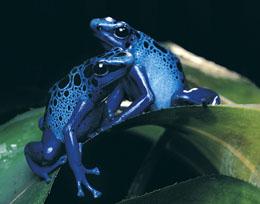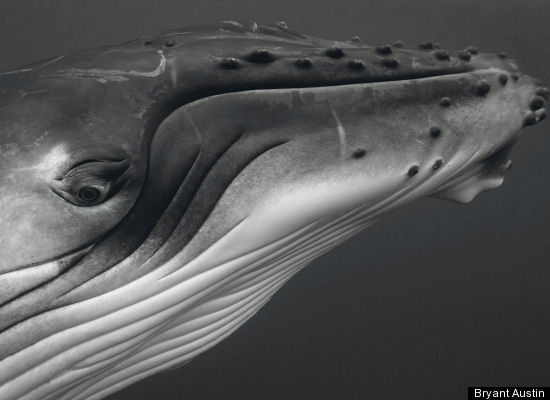TOP STORIES As Bats Begin Hibernation, Deaths Expected
As Bats Begin Hibernation, Deaths Expected
Discovery News - dsc.discovery.com
30 Oct 2009
J Marshall
It won't be long before millions of bats settle into caves and mines across the country to hibernate.
But the sad truth is that many in the East will never see the warmth of spring.
More than a million bats have died so far from white-nose syndrome, a still-mysterious bat killer that has spread throughout the Northeast and into Virginia and West Virginia, since it was first detected in New York in 2006.
CWD confirmed in Johnson County
Buffalo Bulletin - www.buffalobulletin.com
01 Nov 2009
J Gerard
Area: Johnson County, Wyoming, USA - Map It

Chronic Wasting Disease, a neurological disease lethal to deer, has been confirmed in Johnson County, according to officials from the Wyoming Game and Fish Department.
Game and Fish officials have been obtaining samples for CWD testing this season at meat lockers in Buffalo and Kaycee.
Hank Edwards, pathobiologist at the Wyoming Game and Fish Wildlife Disease Laboratory in Laramie, said as of Oct. 22 two mule deer from an area near Ucross had been confirmed positive for CWD.
>>>FULL ARTICLE
Related News
>>>Chronic wasting disease in 3 elk among 560 shot near Rochester - Olmstead County, Minnesota, USA - Map It
>>>Burlington forest preserve to be Kane's front line vs. threatening deer disease [Illinois]
>>>Critics assail institute's lack of science [Colorado]
>>>Montana Hunters Asked To Test Animals For Disease
Related News
>>>Chronic wasting disease in 3 elk among 560 shot near Rochester - Olmstead County, Minnesota, USA - Map It

>>>Burlington forest preserve to be Kane's front line vs. threatening deer disease [Illinois]
>>>Critics assail institute's lack of science [Colorado]
>>>Montana Hunters Asked To Test Animals For Disease
 Oil, bird cleanup crews focus on Alameda coast
Oil, bird cleanup crews focus on Alameda coastSF Gate - www.sfgate.com
01 Nov 2009
D Bulwa
Photo credit: Lea Suzuki / The Chronicle
Area: San Francisco Bay, California, USA - Map It

. . . Oiled birds, including a number of American coots - known for running across the water to build speed for liftoff - were taken to the Oiled Wildlife Care and Education Center in Cordelia. There, staffers began the careful work of warming and cleaning them in hopes of returning them to the wild.
As of Sunday, 30 live birds had been collected and another 11 had been found dead, said Carol Singleton, a spokeswoman for the California Department of Fish and Game. The wildlife center in Cordelia said an additional five birds arrived Sunday.
"We expect to see more impacts to birds in the next few days," Singleton said.
 Amphibians rarely give earliest warning of pollution
Amphibians rarely give earliest warning of pollutionNature News - www.nature.com
29 Oct 2009
M Kaplan
Photo credit: Digital Vision
The health of amphibians is commonly used to give a rough assessment of pollution levels in an area, but an analysis of more than 20,000 toxicity studies now suggests that these creatures are relatively resilient and not well suited to the task.
The finding could have a significant effect on the way that the environment is assessed.
Conventional wisdom suggests that if an amphibian population is thriving, the area is probably clear of pollutants.
>>>FULL ARTICLE
Related News
>>>Departments Collaborate on Amphibian Health Research
>>>Feds study amphibian’s well-being
Related News
>>>Departments Collaborate on Amphibian Health Research
>>>Feds study amphibian’s well-being
OTHER WILDLIFE HEALTH RELATED STORIES
Photo credit: Bryant Austin
 Bryant Austin's Stunning Whale Photography (PHOTOS, VIDEO)
Bryant Austin's Stunning Whale Photography (PHOTOS, VIDEO)- U of M part of $185 million funded team tasked to improve global response to emerging pandemics
- Microbes' globe-trotting has made them less diverse
- Antibody protects animals against Nipah virus
- Harvard professor discusses need for parasites
- Recent ocelot death prompts action - Laguna Atascosa National Wildlife refuge, Cameron County, Texas, USA - Map It

- Dining Out In An Ocean Of Plastic: How Foraging Albatrosses Put Plastic On The Menu
Animal Surveillance
- Remotely Operated Vehicles And Satellite Tags Aid Turtle Studies
- Camera tracks alligator movement

- ANIMAL ROBOTS: Marine Machines Made in Nature's Image
- Satellite to spill penguin secrets
WILDLIFE HEALTH RELATED PUBLICATIONS
Browse complete Digest publication library here.
Reproductive performance in East Greenland polar bears (Ursus maritimus) may be affected by organohalogen contaminants as shown by physiologically-based pharmacokinetic (PBPK) modelling
Chemosphere. 2009 Oct 26. [Epub ahead of print]
C Sonne et al.
Mountain lions prey selectively on prion-infected mule deer
Biol Lett. 2009 Oct 28. [Epub ahead of print]
CE Krumm et al.
DNA Vaccination of American Robins (Turdus migratorius) Against West Nile Virus
Vector Borne Zoonotic Dis. 2009 Oct 29. [Epub ahead of print]
AM Kilpatrick et al.
The application of genomics to emerging zoonotic viral diseases
PLoS Pathog. 2009 Oct;5(10):e1000557. Epub 2009 Oct 26 [free full-text available]
BL Haagmans et al.
Coastal sewage discharge and its impact on fish with reference to antibiotic resistant enteric bacteria and enteric pathogens as bio-indicators of pollution
Chemosphere. 2009 Oct 21. [Epub ahead of print]
SN Al-Bahry et al.




